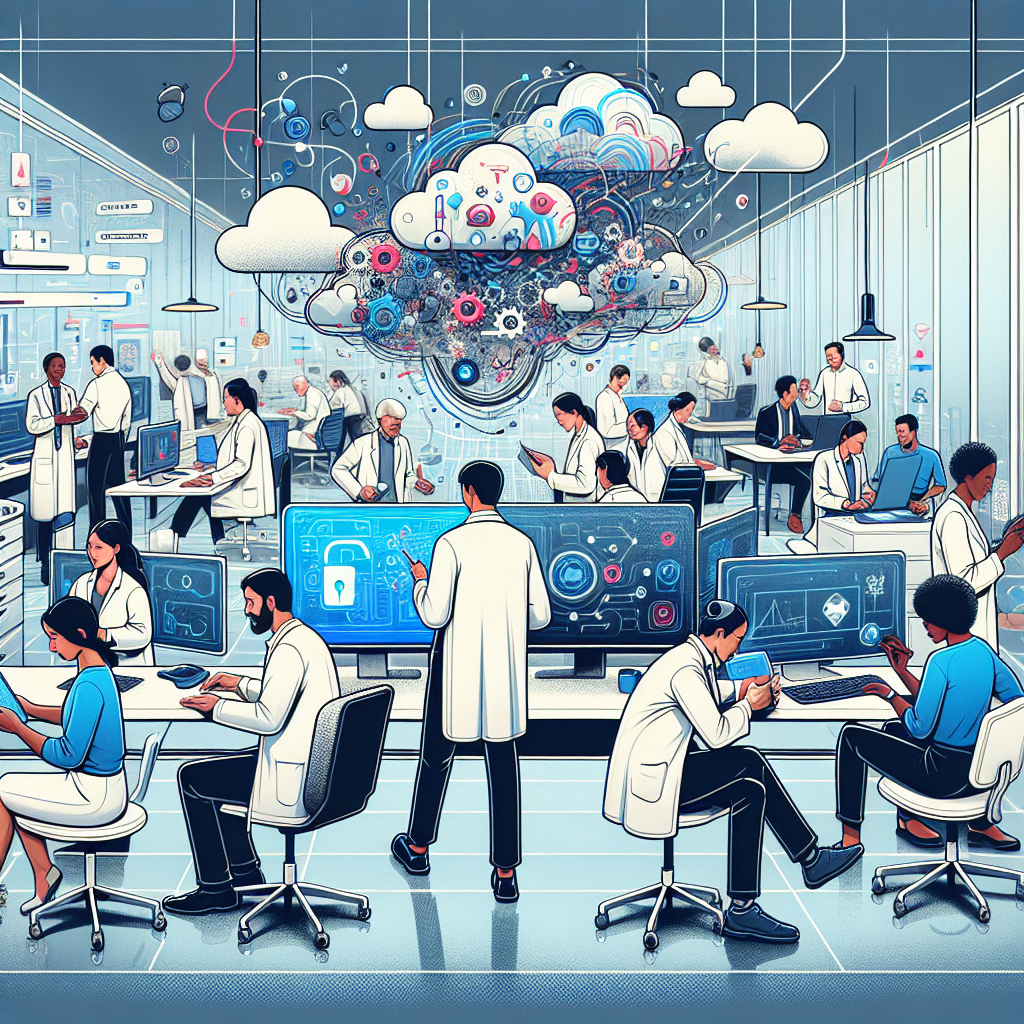AI News
Unleashing Creativity Through Collaboration: A Deep Dive into OpenAI's Dynamic Duo Approach
In the buzzing hive of innovation that is OpenAI, a partnership blossoms—one that deftly blends the sharp analytical prowess of research with the intuitive finesse of product design. Barret, the post-training research maestro, and Joanne, the product guru for model behavior, take us through the hidden alcoves of AI's future. Their narrative, a testament to the potential of combinatorial creativity, reveals a synergy that's not just rare but revolutionary in the tech landscape.
Let's peel back the layers of this tightly wound collaboration to glean the insights that have catapulted AI from a geek's daydream to mainstream stardom—a journey peppered with debates, breakthroughs, and a relentless drive to distill complexity into user-friendly products.
The Dance of Dialogue and Design
October 2022 marked a turning point, a moment steeped in uncertainty and potential. The dialogue interface conundrum had the teams in a bind—should they cater to a niche or cast a wider net? GPT-3.5, though not the latest model, became the vehicle for this ambitious endeavor, embodying a generic approach that reaped unexpected popularity. The less-is-more philosophy paid off, highlighting that sometimes the most generic tools can carve the most specific and intricate masterpieces.
The narrative spotlights the importance of generality in AI systems. By not pigeonholing AI into one function or another, OpenAI has managed to unlock a sandbox of creative applications. The text box may seem unassuming, but it wields the power to understand and merge the complexities of images and words—transforming ambiguity into clarity.
Evolving machine intelligence has led to refined interactions. The dialogue interface's evolution from a basic predictive model to a nuanced conversationalist exemplifies this advancement. InstructGPT was a leap forward, aligning model responses with user intent—like an AI butler, intuitively pre-empting your needs. ChatGPT further refined the dialogue, embracing the multi-turn conversation with a memory for context.
When Intuition Meets Algorithm: The Product Perspective
Product design at OpenAI isn't a quest for profit but a pursuit of universally beneficial artificial general intelligence. This grand vision demands a reimagining of product metrics and strategies, urging product managers to question the very fabric of existing user problems and interface assumptions.
For Joanne, melding the new with the familiar involves crafting an AI personality that's both aligned with OpenAI's ethical framework and intuitively human-like—personalization is the keystone. The user's voice is critical; feedback becomes the compass guiding the incremental betterment of these digital entities.
The Intersection of Human Touch and Machine Precision
In a digital symphony where the users are the conductors, OpenAI's research and product teams foster a dialogue of their own. Their shared goal? To conjure an AI that's not just a repository of answers but one which mirrors the nuances of human interaction, delivering a waltz of responses that range from the informative to the delightfully whimsical.
The desire for intuitive model behavior cannot be overstated. The teams strive to find that perfect balance where the AI neither spews robotic jargon nor borders on the absurd. The ChatGPT model, for example, must discern when to indulge in banter and when to maintain the decorum of a learned sage. This delicate dance between fulfilling a user query and maintaining a coherent personality is the sweet spot that OpenAI seeks to hit.
Shaping the Future: The Vision for a Tailored AI Experience
Looking ahead, the tailor-made AI is not a distant dream but a design imperative. Amongst the innovations heralded by today's announcements, custom instructions stand out as a beacon of user empowerment, laying the groundwork for increasingly personalized AI interactions.
The anticipated multimodality of future models promises a convergence of senses—sight, sound, perhaps even touch— transcending text to craft a more holistic user experience. This vision, once the realm of science fiction, is now firmly on the horizon, promising a future where AI transcends its role as a mere tool and emerges as a partner in the human journey.
A Union of Philosophies: Research and Product Together
This narrative culminates in a celebration of the union between research and product—a relationship that has cultivated an environment where technological marvels and human-centric design can coalesce. It's a paradigm that's becoming increasingly relevant as the AI landscape burgeons with new ventures.
The partnership at OpenAI is a beacon for the industry, a testament that when researchers and product designers unite under the banner of innovation, the resulting alchemy can weave the abstract threads of AI into the tangible fabric of everyday life.
As the teams at OpenAI continue to break new ground, they leave us with a tantalizing glimpse into the realm of possibility—a realm where AI becomes an extension of the human experience, as familiar as a conversation and as indispensable as intuition itself.
For more background information on the evolution of AI interfaces and the significance of dialogue-based models, interested readers can delve deeper through resources such as the Stanford Natural Language Processing Group or the Association for the Advancement of Artificial Intelligence.
In conclusion, the fusion of OpenAI's research and product teams serves as a model for how collaboration across disciplines can yield innovation that's not just groundbreaking but also grounded in the realities of user experience. This dynamic duo approach could very well be the blueprint for the future of product development in AI and beyond.
Related News
- Unveiling the Alchemy of AI: From Prototype to Production Mastery
- Diving Deep into the Latest AI Whirlwind: An Analysis That's Both Electric and Enlightening
- The Dawn of GPT-5 and Beyond: A Deep Dive into the Future of AI
- Navigating the Brave New World of AI: A Zesty Analysis
- Navigating the Next Horizon: OpenAI's GPTs and the Agents of Change
